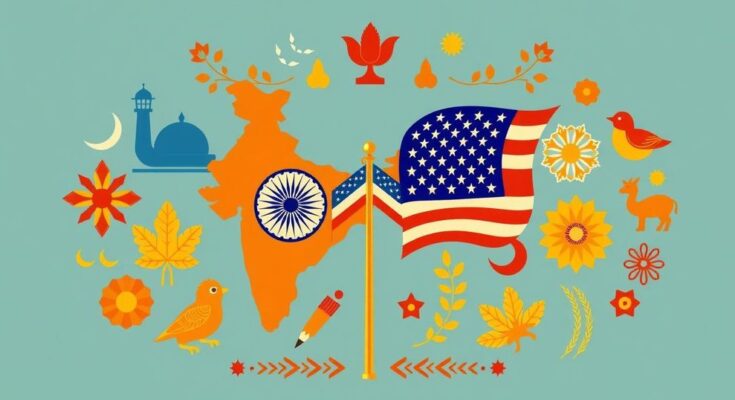India is navigating potential U.S. trade tensions as President Trump might resume reciprocal tariff threats aimed at high Indian import duties. Historical tariff disputes complicated U.S.-India trade relations during Trump’s first term; however, opportunities could emerge for Indian exporters should tariffs be raised on Chinese goods. Despite these trade challenges, the strategic partnership between the nations remains resilient based on mutual concerns about China’s influence.
In the wake of recent developments in U.S.-India relations under President Trump’s potential second term, significant trade tensions have resurfaced. Trump’s stance reinforces the notion of reciprocal tariffs, particularly targeting India’s high import duties on American products. Previously labeling India as a “tariff king” for imposing elevated tariffs on goods such as Harley-Davidson motorcycles, Trump has consistently expressed dissatisfaction with India’s trade policies, contributing to a climate of uncertainty in bilateral trade.
The historical context of tariffs between the two nations remains complex. During Trump’s initial presidency, retaliatory tariffs were implemented by India following U.S. tariffs on steel and aluminum. This culminated in the withdrawal of India’s Generalized System of Preferences (GSP), which had profound implications for Indian exports. By the 2023-24 fiscal year, India’s exports to the U.S. reached $77.52 billion, making the U.S. its foremost export partner, with imports amounting to $42.2 billion.
As the possibility of Trump’s administration enacting a U.S.-centric trade policy emerges, India may confront the challenge of lowering its trade barriers. However, amidst this landscape, there exist notable opportunities. Increased U.S. tariffs on Indian goods could hamper competitiveness in key sectors such as IT and textiles. Conversely, similar tariffs on China may provide Indian exporters access to an expanding market within the U.S.
Despite tariff disputes, the first term of Trump’s presidency witnessed a strengthening of strategic ties between India and the U.S., particularly in defense and geopolitical concerns. Events such as “Howdy Modi” and “Namaste Trump” highlight the robust camaraderie shared by the two nations. Both leaders are aligned in their concerns regarding China’s ascension, which could ultimately mitigate some of the trade-related challenges anticipated under a Trump 2.0 scenario.
In summary, the prospect of Trump’s return to the presidency may intensify pressure on India regarding trade tariffs. While challenges exist, such as potential increased tariffs on Indian goods, opportunities may arise as Indian exporters could fill gaps in the U.S. market created by tariffs on China. Additionally, the strategic partnership fostered during Trump’s first term indicates a complex interplay between trade and geopolitical collaboration that may benefit both nations.
Original Source: m.economictimes.com




